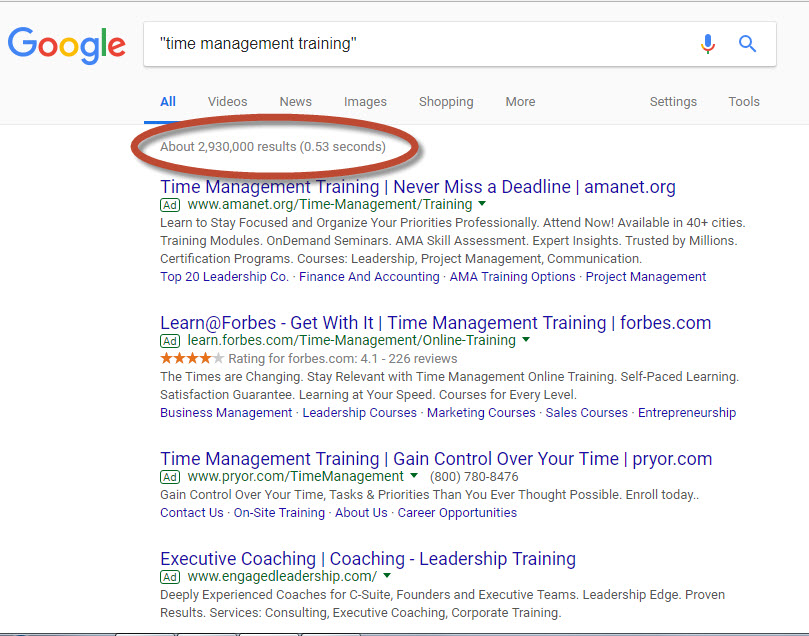Everyone understands how valuable it can be to get a partner with a large list to promote your product or service. But the fact is, there’s a hidden benefit to joint ventures that’s much more beneficial – and much more profitable.
Most people overlook this benefit completely. And that’s due to something I call “marketing tunnel vision”. By this, I mean you see something in a narrow, limited way.
But if you dig a bit deeper and view an opportunity from multiple angles instead of just head on, you’ll almost always come up with something as valuable or more valuable than the main benefit. And that’s certainly the case with joint ventures.
How I handle joint ventures in my own business – and the “outside the lines” way I came to do this
Years ago, I used to chase as many potential JV partners as I possibly could to try to get them to offer my products to their subscribers. It often worked. But it just as often failed.
People wouldn’t answer my initial email. They wouldn’t answer my follow up emails. And of those that did, the majority were either too busy or said something like, “Sorry, our marketing schedule is fully booked right now”. Still others promised to mail their lists for me, but didn’t follow through.
So overall, only a fraction of the people I asked to promote my product to their list actually did so. That’s just the way that joint ventures work. You throw a LOT of mud against the wall and hope some of it sticks. And when some does stick, you can often do quite well.
But the problem is that this process is both time-consuming and frustrating. After years of suffering through this, it got me to thinking, “There’s got to be a better way”.
And with a bit of creative thought, I discovered there is a better way. A much better, much more profitable way to use joint ventures.
So here it is…
Instead of inviting other companies to sell my product to their subscribers in exchange for me selling their product to my list, I do something totally different. I only ask if they will let me sell their product to my list.
You might want to read that last paragraph one more time. That’s because this “outside the lines” approach blows the conventional way of doing JVs to pieces.
Removing all the roadblocks from joint ventures with one single move
Whenever you use the conventional approach to setting up joint ventures, that approach triggers a number of serious problems.
Many of your potential partners have never heard of you, so they have no reason to even consider your offer. There is always a disparity in list size – why would someone with a list of 120,000 subscribers want to swap promotions with you when your list is only 3,500 subscribers?
Then there’s the question of who will mail first. Or in many instances, whether a large partner even has room in their schedule to mail at all.
The final blow is that if a partner doesn’t already know you, they can’t possibly feel comfortable that they’ll actually get paid for the sales they make for you.
For all these reasons and more, the conventional method of setting up joint ventures fails the majority of the time. And that’s why it’s so time-consuming, frustrating, and so deeply flawed that it’s hardly worth doing.
But what if you could turn all of those problems around with one single move? What if you could eliminate all the roadblocks the conventional method of setting up joint ventures throws at you and get agreement from 90% of the partners you approach, using just this one single move?
It’s actually quite easy to do.
All you have to do is STOP asking potential partners for reciprocal agreements. STOP asking them to sell your product to their list. And ONLY ask if you can sell their product to your list.
Now, instead of a suggesting reciprocal mailings, your invitation will look something like this, “My name is Bob and I realize you don’t know me. I have a list of 3,500 subscribers who are loyal followers of my ezine and a lot of them buy our yellow widgets. I’m pretty sure they’d like your blue widgets too. Can I sell your blue widgets to my list?”
What do you think most companies are going to say? Obviously the answer from the majority of them will be an emphatic “Yes”. Because what you’re really offering is to bring them more sales at no cost to them – and WITHOUT the hassle of having to mail for you.
The hidden benefit of setting up joint ventures this way
The method I just described is an approach I developed called Frictionless Joint Ventures. What this means is that it removes all the friction points, all the roadblocks that are created by the conventional method of setting up joint ventures. And since you’re only asking to sell another company’s product to your list, you get a quick agreement the majority of the time.
So why would you want to do this and not ask for a reciprocal mailing from your partner? It’s because of the hidden benefit you get from joint ventures set up this way.
You see, when you use the Frictionless Joint Ventures approach, what you’re really doing is turning your list into a distribution center for the types of products and services your subscribers want most. And you get a cut of every sale even though you have no development time, no costs and no risks to do this.
Here’s why becoming a distribution center works so well. Whenever someone buys or even thinks about buying a product or service, they immediately start thinking about other complimentary products they might also need. And it doesn’t matter what product or service they’re buying, this behavior occurs 100% of the time.
For example, a client of mine sells training programs for new sales people. When I asked him what the first product is that most new sales people want after they’ve taken his training, he quickly replied, “time management skills”. But he doesn’t offer his own product on time management.
So I asked him to do a Google search on the keyword phrase “time management training” being sure to enclose the search term in quotation marks so he would only get exact matches.
Here are the results that search returns:
As you can see, I’ve circled the number of results returned in the upper left portion of this screen shot. And even though we qualified the search to return the fewest results possible, Google found 2,930,000 listings for “time management training”!
This creates a massive problem for my client’s customers who have just completed his sales training program. How can they possibly tell which of these 2,930,000 options are good and which are pure junk?
At the same time, this opens up an excellent opportunity for my client to be of service to his customers and make an additional sale at the same time. Since he and his staff already use a reliable time management tool, he can set up a deal with the vendor to sell that same tool to his customers.
This saves his customers countless hours of useless research trying to figure out which time management tool to buy. And my client gets a commission for every sale he makes.
But the good news doesn’t stop there…
Broadening your “distribution center”
As I mentioned, any time a person buys a product or thinks about buying it, they immediately start thinking about buying a number of other complimentary products. And this behavior occurs for any product or service.
So the example I gave you above is really just the tip of the iceberg. In addition to the time management tool my client could sell to his customers (and prospects too), there are many other complimentary products he could offer.
CRM software, lead generation systems, LinkedIn training, video calling services, automated email follow-up services, and contract management software are just a few examples that come to mind. My client could easily expand this list to a couple dozen quality products and services with just a bit of thought.
And the same goes for any product or service – including yours. All you have to do is devote about 15 minutes to creating a list of complementary products and services your customers and subscribers are likely to want and you’ll easily come up with 10, 20 or more great options.
Then, use my simple process to contact the vendors of some of those products and start offering them to your subscriber list. Doing this on a regular basis will maximize the power of your list to act as a distribution center.
Not only will you make a lot more sales to your list, but you’ll also generate a tremendous amount of goodwill and loyalty that creates customers for life.
Plus, over time, a number of your partners will get to know you and become far more likely to agree to sell your product to their lists. So you simply can’t lose with this approach!
*** *** *** *** *** *** *** *** *** *** *** *** *** ***






 Eliminate the frustration of setting up joint ventures for your business
Eliminate the frustration of setting up joint ventures for your business